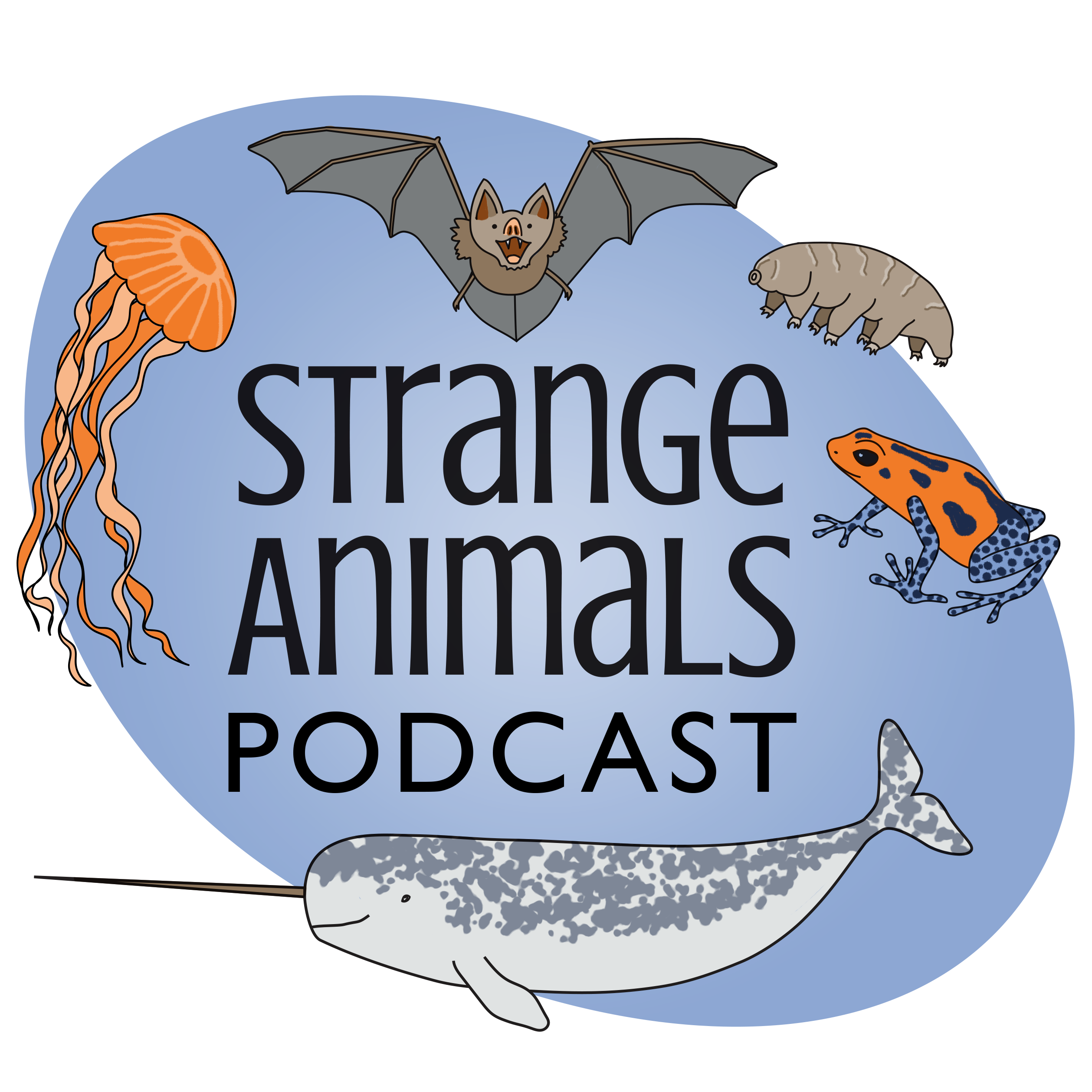Episode 260: Danger! Newts!

Sign up for our mailing list! We also have t-shirts and mugs with our logo!\n\nThanks to Enzo for suggesting this week's topic, newts from least dangerous to most dangerous!\n\nFurther reading:\n\nOne snake's prey is another's poison\n\nThe Corsican brook salamander is not toxic (photo by Paola Mazzei, from iNaturalist):\n\n\n\nThe smooth newt is a little bit toxic (photo by Fred Holmes and taken from this site) - this is a male during breeding season:\n\n\n\nThe Hong Kong warty newt has an orange-spotted belly and is toxic:\n\n\n\nThe chonky Spanish ribbed newt will stab you with its own toxin-covered bones (photo by Eduardo Jos\xe9 Rodr\xedguez Rodr\xedguez, taken from this site):\n\n\n\nYeah maybe don't touch the Japanese fire belly newt if you don't need to:\n\n\n\nWarning! Do not eat the California newt:\n\n\n\nThe safest newt to handle is this toy newt. I really want one:\n\n\n\nShow transcript:\nWelcome to Strange Animals Podcast. I\u2019m your host, Kate Shaw.\nThis week\u2019s topic is a suggestion from Enzo, who wants to learn about newts \u201cfrom least dangerous to most dangerous.\u201d There are at least 60 species of newt known with more being discovered every year, but I\u2019ll do my best to hit the highlights.\nA newt is a type of salamander, specifically a semi-aquatic salamander in the subfamily Pleurodelinae. All newts are salamanders but not all salamanders are newts. Newts live throughout much of the northern hemisphere, including northern Africa and the Middle East, Eurasia, and North America.\nFemale newts lay their eggs in freshwater, usually attaching them to vegetation or in little crevices in rocks. A few weeks later, the eggs hatch into larvae with external gills. The larvae are called tadpoles like frog larvae, and they mostly eat algae and tiny insects. They metamorphose over several months just like frogs do when they develop from tadpoles, but where frogs develop their hind legs first, newt tadpoles develop front legs first. The newt tadpole finally absorbs its gills and grows lungs instead, at which point it emerges from the water as an immature newt called an eft. Efts are juvenile newts and live exclusively on land, although like other amphibians they have to keep their skin damp so you\u2019ll usually find them in leaf litter and under rotting logs. Efts that live in North America return to the water when they become full adults, but most newts in other parts of the world stay on land the rest of their lives except during breeding season. Efts and adult newts eat worms, insects and insect larvae, slugs, frog tadpoles, and any other small animals they can catch.\nThe Corsican brook salamander is a type of newt that lives on the island of Corsica in the Mediterranean Sea. It grows about five inches long at most, or 13 cm, and is brown or olive-green, sometimes with a mottled pattern of orange or red on its back. It\u2019s an exception to the rule that newts outside of North America usually live their adult lives on land. Not only does the Corsican brook salamander live in freshwater most of the time as an adult, it doesn\u2019t even have working lungs. It spends most of its time in fast-moving streams and rivers in higher elevations, where it absorbs oxygen from the water through its skin.\nAs Enzo undoubtedly knows, many newts produce toxins. This is why it\u2019s not a good idea to handle a newt, or any other amphibian for that matter, unless you\u2019re absolutely certain it\u2019s a species that\u2019s not toxic. In most cases, a newt\u2019s toxin won\u2019t hurt you if it just touches your skin, but if it gets in a cut or if you have some of the toxin on your finger and then rub your eye or put your finger in your mouth, the toxin can make you really sick. Some newts are even deadly.\nThe Corsican brook salamander we just talked about is not toxic, so we\u2019ll call it the least dangerous newt. The smooth newt, on the other hand, produces a relatively mild toxin. You\u2019d have to actually eat a bunch of smooth newts to get sick from its toxins,